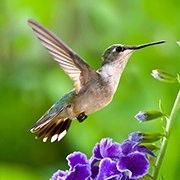Karate Way

Stepping onto the karate mat for the first time is both exciting and challenging. At first glance, karate might look like just punching and kicking, but it’s much more than that. Karate is about discipline, coordination, balance, and focus.
If we’ve trained in boxing or other striking arts before, we already have a head start. Our foundation of movement, weight transfer, and body control helps us pick up karate faster. But karate has its own structure, precision, and style that we need to master to see real progress.
Mastering the Basics
The first stage of karate training focuses on basics. This includes punches, kicks, blocks, and stances. We start by practicing single strikes to develop proper form, balance, and control. Then we move to combinations—mixing hands and feet into flowing sequences. Each motion is repeated hundreds of times until it becomes natural and precise.
For instance, a simple front punch may seem easy, but mastering it requires rotating the hips, shifting our weight correctly, keeping our guard up, and maintaining perfect balance. Over time, these basic techniques form the backbone of more complex movements. They also train our muscles and help us develop faster, more controlled strikes during sparring.
Kata: Turning Movement Into Skill
Next comes kata, the pre-arranged sequences of punches, kicks, and defensive moves. Kata might look like solo choreography, but every movement has a purpose. Each sequence represents practical applications in attack and defense.
By practicing kata, we develop timing, precision, coordination, and stamina. A good instructor helps us break down each motion to understand how it could work in a real fight. Even though it’s done alone, kata strengthens the connection between mind and body, teaching us control, patience, and focus. Over time, the techniques learned in kata can be applied directly during sparring or real situations.

Sparring: Applying Skills in Real Time
Sparring, or kumite, is where all our training comes together. Early on, sparring is often “conditioned,” meaning movements, attacks, and defenses are pre-planned. This controlled environment helps us practice timing, distance, and reactions safely.
As we improve, restrictions gradually reduce, and free sparring allows us to face opponents in a more realistic, unscripted way. Lykkers, free sparring challenges our reflexes, strategy, and adaptability. It’s thrilling and shows how effectively our basic techniques and kata practice translate into real action. Sparring also improves mental focus and teaches us to think quickly under pressure.
Building Strength, Agility, and Focus
Karate isn’t just about technique—it’s about developing strength, agility, and focus. Every drill, kata, and sparring session helps improve core stability, muscle control, and flexibility. Even small routines like shadowboxing or footwork drills strengthen our reflexes and coordination.
Consistency is key. Practicing a little every day is far more effective than sporadic long sessions. Lykkers, over time, these small daily practices lead to noticeable improvement in speed, precision, and endurance.
Structuring Our Training Routine
To get the most out of karate, we combine basics, kata, and sparring in each session. A typical 90-minute session might look like this: 15–20 minutes of stretching and footwork drills, 30 minutes practicing basic techniques, 20 minutes performing kata, and 20–30 minutes of sparring. Ending with a cool-down and stretching ensures our muscles recover properly.
Keeping a structured routine not only helps us progress faster but also makes training more enjoyable. Lykkers, karate becomes more than just an exercise—it becomes a lifestyle that strengthens our body and sharpens our mind.
Our Karate Journey
Karate training is a journey of growth, discipline, and self-improvement. Lykkers, by focusing on basics, kata, and sparring, we develop strength, speed, focus, and coordination. Whether we practice for a few months or make it a lifelong pursuit, karate challenges us physically and mentally, leaving us more confident, agile, and aware of our own abilities.
Let’s step onto the mat with curiosity, patience, and dedication, and watch ourselves transform one punch, kick, and kata at a time.
KARATE 15 BASIC MOVEMENTS 🥋⛩️ | SHOTOKAN KARATE
Video by ULTIMATE KARATE

 · Sport team
· Sport team